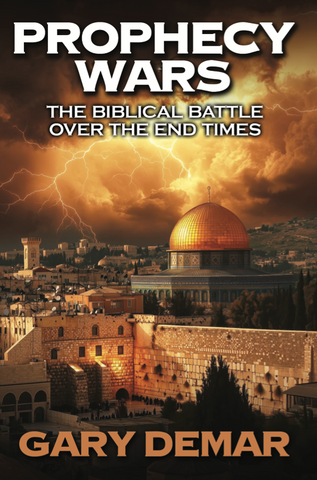Bible Prophecy Under the Microscope-Episode 22
Gary discusses a popular interpretation of Matthew 24 that assumes a split in time in what Jesus is explaining to His disciples.
It’s significant that if there is no gap in time after Matthew 24:36 where events are yet to be fulfilled, the verses that follow track chronologically and are part of the previous signs of the discourse. This means that rest of the events in chapter 24, and in my estimation all of chapter 25, apply to the same generational judgment that were fulfilled before that generation passed away.
We can see this when we turn to Luke 17:22-37 where identical signs are found that line up with what we find in Matthew 24. The difference between Matthew 24 and Luke 17 is the order of the events in relation to Matthew 24:35-36, a characteristic of the passages that are difficult to explain if the order of events is important. Bahnsen and Gentry do not consider the ordering of events to be significant since Matthew and Luke often differ. I and others disagree.
Taking Matthew 24 as the standard, Luke places the Noah’s ark analogy (Luke 17:26-27) found in Matthew 24:37-39 before the events of Matthew 24:17-18 (“let him who is on the housetop not go down”), verse 27 (“for just as the lightning comes from the east”), and verse 28 (“wherever the corpse is, there the vultures will gather”).
If the five prophetic events of Matthew 24 found in Luke 17:22-37 are numbered 1-2-3-4-5, Luke’s numbering of the same events would be 2-4-1-5-3. It seems odd that Jesus would mix the events of two comings separated by 2000 years in the same discourse. How confusing it would have been for those who first heard and later read what Jesus said later in the 21st chapter of Luke’s Gospel. The chart on the next page (307) offers some visual help. Note that sections 2 and 4 from Luke 17 appear before Matthew 24:35-36.

Prophecy Wars
Commentators, theologians, preachers, and social media pundits have a lot to say about Bible prophecy. In Prophecy Wars, Gary DeMar takes a hard look at some of Christendom’s most popular end-times misconceptions and compares these theories to a plain reading of many well-known but often misinterpreted Bible texts. If you’re willing to take the Bible at its word, the study of prophecy can strengthen your faith, but if your trust is in man’s speculations, you will be disappointed every time.
Buy NowGary discusses a popular interpretation of Matthew 24 that assumes a split in time in what Jesus is explaining to His disciples. Gary doesn’t agree and shows how it can’t be possible, especially when looking at the parallel passage in Luke’s gospel and his description of the same events.
Click here for today’s episode
Click here for all episodes of Bible Prophecy Under the Microscope

